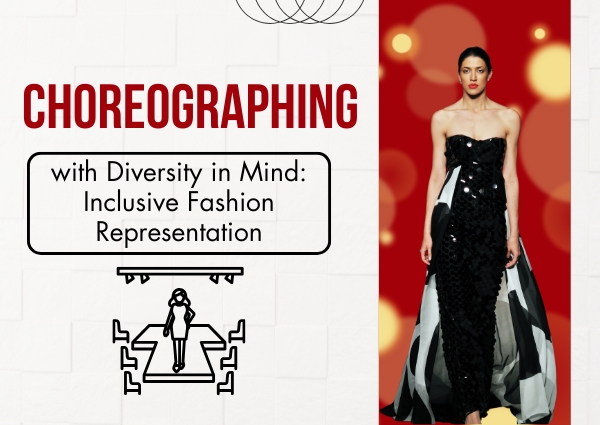Fashion has always been a powerful tool for self-expression and cultural identity. Yet, for decades, the runway has been criticized for its lack of inclusivity, often presenting a narrow standard of beauty. Today, however, the industry is undergoing a remarkable transformation—and fashion choreographers are playing a pivotal role in this shift.
At Babla Kathuria, we believe that choreography in fashion is not only about elegance and flow but also about representation and inclusivity. This blog explores how choreographers can embrace diversity in their shows and why inclusive representation is the future of fashion.
Why Diversity Matters in Fashion Choreography
The runway is more than a platform for clothes—it is a stage that reflects society. Audiences no longer want to see only one body type, one skin tone, or one definition of beauty. Diversity matters because it:
- Represents real people: Audiences connect better when they see models who look like them.
- Challenges stereotypes: Showcasing different identities helps break outdated beauty norms.
- Celebrates individuality: Inclusion highlights unique stories, backgrounds, and cultures.
- Builds brand value: Fashion brands that embrace diversity appeal to a wider, global audience.
The Role of Choreographers in Inclusive Representation
Choreographers are the architects of runway storytelling. Their choices—casting, walk sequences, body language, and stage presence—can either reinforce stereotypes or dismantle them. Leading choreographers today are actively:
- Casting models of different ethnicities, ages, and sizes.
- Including plus-size, differently-abled, and transgender models.
- Designing walk patterns that highlight individuality rather than uniformity.
- Adapting choreography for models with mobility aids or unique physical needs.
This intentional approach ensures every model feels confident and celebrated.
Key Techniques for Inclusive Fashion Choreography
- Adaptive Walk Training
Not all models will move in the same way—and they shouldn’t have to. Choreographers adapt walking techniques for individuals, whether it’s someone in a wheelchair, a plus-size model, or a senior model. The goal is to highlight strengths, not force uniformity.
- Showcasing Individual Flair
Instead of demanding identical walks, choreographers allow space for personal expression. This adds authenticity and keeps the runway dynamic and engaging.
- Stage Positioning with Equality
All models—regardless of background or body type—should get equal stage time. Inclusive choreography ensures no one is overshadowed or placed in the background.
- Music and Cultural Sensitivity
Runway music often carries cultural undertones. Inclusive choreographers are mindful about not stereotyping cultures and instead use music that celebrates diversity respectfully.
- Collaborating with Designers
Designers and choreographers must work hand-in-hand. The choreographer ensures that designs created for diverse bodies are presented in a way that celebrates individuality rather than hides it.
Overcoming Challenges in Inclusive Choreography
While inclusivity is vital, it comes with challenges:
- Industry Resistance – Some brands still cling to conventional beauty ideals.
- Logistical Adjustments – Extra planning is needed when working with adaptive models.
- Audience Bias – Changing mindsets takes time, and choreographers must push through criticism.
Despite these hurdles, choreographers who embrace inclusivity report greater audience engagement and stronger emotional impact.
Real Triumphs of Inclusive Runways
Many leading fashion shows worldwide have embraced inclusivity, setting new standards. From plus-size models at Paris Fashion Week to wheelchair users at adaptive fashion events, these shows prove that inclusivity is not just a trend—it’s a necessity.
The triumph lies not only in audience applause but in how models themselves feel: respected, represented, and empowered. When a model walks with confidence, the entire show radiates authenticity.
The Future of Inclusive Fashion
The future runway will no longer have “special” inclusive shows—it will simply be inclusive by default. Choreographers will increasingly focus on blending diversity seamlessly rather than spotlighting it as an exception.
Technology will also play a role—virtual fashion shows and digital avatars will allow representation of identities beyond physical limitations. However, the essence will remain the same: fashion choreography must celebrate every story.
Choreographing with diversity in mind is not a challenge—it is an opportunity to reshape the fashion industry into something more authentic, powerful, and human. By embracing models of all shapes, sizes, genders, and abilities, choreographers create shows that speak to the heart, not just the eyes.
At Babla Kathuria, we believe inclusivity is the true future of fashion choreography. Because fashion is for everyone—and every step on the runway should reflect that truth.

